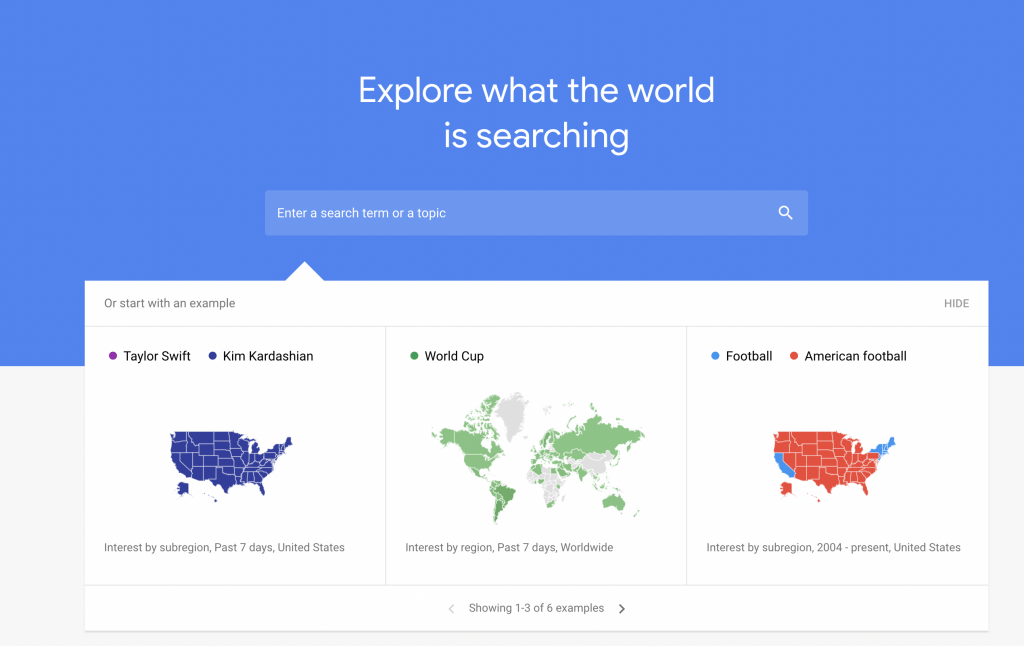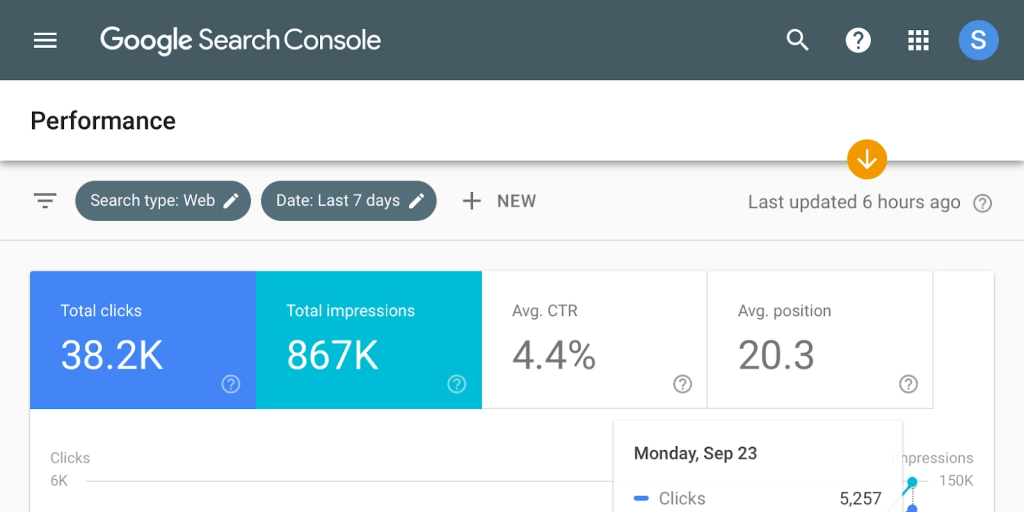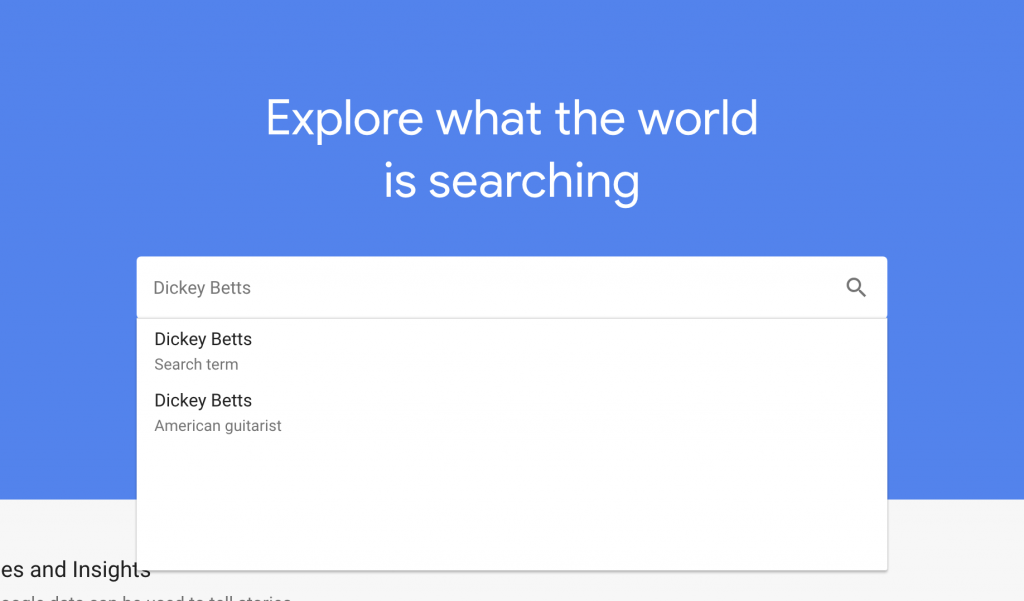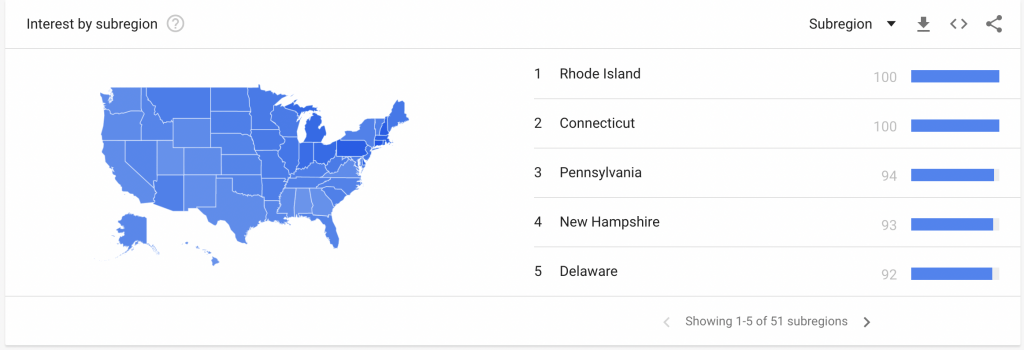Quick Links
If you want to grow a significant online presence for your business, you can’t afford to ignore the power of Google and SEO (search engine optimization).
Google search accounts for more than 79% of desktop traffic. Their top competitor, Bing, only accounts for 7.27% – so it’s clear that Google is where you should focus a majority of your efforts if you want to boost traffic.
Yet, to get the most out of your keyword research, content creation, and other SEO efforts, you need top-tier analytical tools to measure your success and ensure you’re on the right track.
Luckily, Google has a suite of free research tools you can use, including Google Search Console (GSC), Google Analytics (GA), and the focus of our article today – Google Trends (GT).
Whereas GSC and GA give you insights into critical metrics like bounce rate, click-through rate, and CPC – Google Trends is all about presenting search trend data for a particular keyword or query over time.
In other words, you’ll get to view the popularity of keywords over a set period of time on a graph.
Google Trends data is a precious tool for SEO and content marketing if you know how to use it, so stay tuned to learn everything you need to know.
What is Google Trends, and How Does it Work?
Google Trends first emerged in 2006, but it contains search volume data from 2004. Over the years, many iterations of Google Trends and related websites (such as Google Flu Trends in the early 2010s) have been used.
The concept is to use the tool to discover trending searches and keywords that you can use for your SEO content.
The primary feature of Google Trends is the search volume tool, which is very straightforward in its use.
You type a search term into it, hit the button, and you’ll get to see a graph displaying the keywords’ trend over a specific time frame (the default is 12 months, but you can set it to go back further).
It’s an excellent feature because you’ll see if the term’s search interest is gaining momentum or falling off.
For example, if you type a term into GT and notice that its search volume is high but losing momentum, that’s a sign that interest in the keyword is waning, so you should avoid it.
The same is true if you discover a keyword with low search volume but is on the rise. In this scenario, you would want to target the keyword for your content because the term is about to blow up.
That’s an overview of the tool, but it also contains many other features – the ability to view YouTube data in addition to Google.
Using Google Trends for SEO
If you’re only using GSC and GA for your SEO strategy, you’re missing out on all the valuable insight that Google Trends can provide for your campaigns.
For example, let’s say that you’re doing research for a new keyword that you plan to base a blog post on.
You head over to Google Search Console to check out its search volume. It’s relatively high, and the keyword difficulty is low, so you decide to go all-in with it.
If you had incorporated Google Trends into the mix, you would have noticed that the keyword is currently trending but is quickly losing popularity – and is about to see a significant drop-off.
As a result, when you release your blog that’s perfectly optimized for the keyword, its search volume will have dissipated entirely.
That’s why viewing search trend data for a keyword is invaluable and will help you avoid investing in keywords about to fall off. Conversely, viewing online search trend data can also help you pick up on keywords that are about to gain serious momentum.
This is only one small example of how you can leverage Google Search data on Google Trends, so let’s look at some more.
Breaking down the search trends feature
GT’s flagship feature is the ability to view detailed search trend graphs for any keyword you type into it.
It’s essential to note that GT does not provide a detailed number for search volume. Instead, it graphs it using a scale of 1 – 100, with 0 being the lowest point of popularity and 100 being the highest.
It’s also crucial to know that GT draws its data from various sources, not just Google Search. In fact, its search volume index consists of:
- General web search
- Google Image search
- Google News
- Google Shopping
- YouTube
As you can see, GT has a massive data index, which greatly improves its accuracy.
Note: Web search is the only source that lets you view data from 2004. The other sources only provide data back to the year 2008.
For each keyword, you’ll have the option of setting:
- The data source you want to use
- The time frame
- The geographical areas you want to target (you can separate them by country/region/subregion)
- The category you want to see
These parameters allow you to get extremely detailed with your Google Trends searches. For instance, if you want to search for a keyword and only show results from the United Kingdom during 2022 from web search results in a niche category – you can easily do that.
Keyword groups
Whenever you type a term into Google Trends, it will present you with a few different ‘keyword groups’ for it.
What are those?
They’re specific keyword categories that will alter the results that you get. As an example, if you type in ‘Dickey Betts’ into GT, you’ll have a few keyword groups to choose from:
- Dickey Betts (search term)
- Dickey Betts (Allman Brothers guitarist)
- Dickey Betts (Solo musician)
As a search term, Dickey Betts would only include data for that keyword.
As the Allman Brothers guitarist, Dickey Betts would also include related results, such as ‘Dickey Betts Allman Brothers songs,’ etc.
The same is true for Dickey Betts as a solo musician – as there will be related queries for his solo records.
The related queries table
Whenever you enter a keyword into Google Trends, you’ll see a lot more than its search interest over time.
If you scroll past the graph, you’ll see one of the handiest features of GT, the related queries table.
Bear in mind that this is not yet another keyword suggestion tool. Instead, it recommends related search queries that are currently trending or about to trend.
If you look to the right of each related query, you’ll see its search volume increase (the proof that it’s trending). For example, you might see something like ‘+2,900 %’ next to a related keyword.
That means interest in the keyword has grown by a whopping 2,900%, which means it’s an excellent keyword to target.
You also have the option to filter the results to show either top searches or rising searches.
Again, this is so useful because these keywords use search trends data instead of going by raw search volume alone.
As stated before, a high search volume for a keyword doesn’t mean that it will stay that way forever. Without looking at the trends, you’ll have no way of knowing if a keyword is losing or gaining momentum.
Breakout keywords
You may occasionally notice the word ‘Breakout’ next to a related query instead of a search volume increase percentage.
What’s that mean?
It indicates that Google didn’t have enough search volume data to calculate a before and after percentage for the query.
It also means that the query is growing in interest by more than 5,000% – as according to Google, any query over 5,000% automatically gets marked as a breakout keyword.
These keywords can be extremely valuable, so it’s a good idea to target at least one or two of them when they show up.
Why can they be valuable?
It has to do with the reason why they scored such a high search volume percentage increase – they are low-competition keywords. They’re generating a lot of user buzz, but few to no blogs or websites have picked up on them yet.
In fact, it’s normal for breakout keywords to have strong search interest and volume yet next to no keyword difficulty. So if you target a breakout keyword, you stand a strong chance of ranking on page one of Google.
The bad news is that breakout keywords are sometimes fads. That means they’ll become super popular for a month or two but then fade into obscurity. Still, breakout keywords make excellent targets, and using Google Trends is the quickest and easiest way to discover them.
Discovering Related Topics for Videos and Blogs
Are you drawing a blank on what to write about in your next blog post?
If so, Google Trends can help you out with that. Besides gaining insight into search trends and uncovering related trending keywords – GT can also help you develop new content topic ideas.
When you scroll down to view the ‘related queries’ table, you’ll notice a ‘related topics’ table next to it.
The table works exactly the same way the related queries table does by showing you trending topic ideas that users in your niche are seeking out.
Once again, this is extremely valuable because the topic ideas here are backed up by hard data in real-time.
That will save you a ton of legwork when it comes to developing new topic ideas. Instead of scouring internet forums and Facebook groups for insight on what your audience is looking for, you can use the related topics table instead.
Once you’ve found a topic that interests you, GT can also help you find specific trending keywords within that topic.
Like the related queries table, each topic will have a search volume percentage next to it, including whether the topic is a ‘breakout’ or not. Breakout topics can help you get ahead of the competition with your next series of blogs, videos, or podcasts.
You can also toggle the results to show top searches or rising searches. While top searches aren’t seeing rapid growth, they consistently generate lots of traffic. That makes them a safe choice if you don’t want to risk a rapidly growing keyword becoming a fad.
Finding keywords for YouTube videos
If you have a YouTube channel or focus primarily on YouTube as a content creator, you can still benefit from using Google Trends.
Since Google owns YouTube, GT has all of YouTube’s data (it’s even one of its exclusive data sources).
YouTube is a search engine in the same way that Google is, which is why YouTube SEO exists. To rank high on YouTube, you need to do keyword research like you do for Google or Bing.
And if there’s one thing Google Trends excels at, it’s uncovering trending keywords to target for your SEO campaigns, and YouTube is no different.
You need to remember one thing if you’re using GT for YouTube keyword research – to set the data source to YouTube. If you forget this crucial step, you’ll wind up with search trends data from the general web or Google.
Interest by subregion (local SEO)
You’ll definitely want to use the ‘interest by subregion’ report on Google Trends if you have a local business.
It will show how a specific keyword trends in different cities, states, and subregions. For instance, if you enter the US, you’ll see how popular the keyword is in each state.
As you can imagine, that’s powerful data to have if you run a restaurant or provide local services. If you find out that people search for ‘New York-style pizza’ in your area more than others, it could convince you to add it to your menu.
Closing Thoughts: Google Trends for SEO and Content Marketing
That’s an overview of how you can use Google Trends to boost your SEO and content marketing efforts.
GT is a handy tool you should use along with Google Analytics and Search Console.
Studying trends is necessary for any type of marketing, and SEO is no different. Knowing if a term is gaining or dropping off in popularity is something you can and should check for every keyword you research.
If you lack the time or staff to implement a rock-solid SEO strategy on your own, we’d love to handle it for you at The HOTH. We offer fully managed SEO services at HOTH X, so don’t wait to try us out today.













